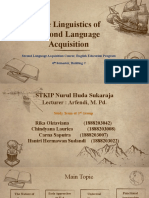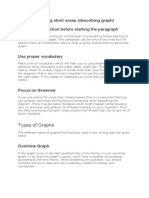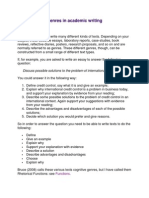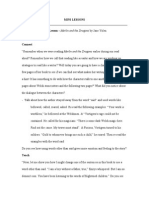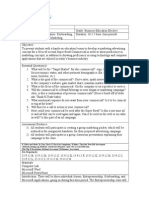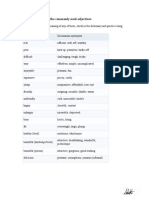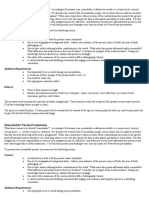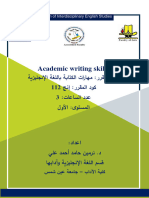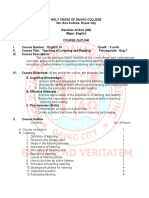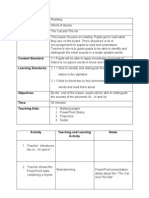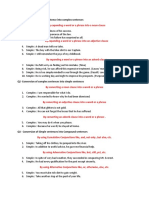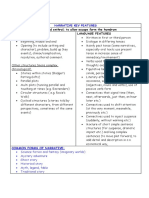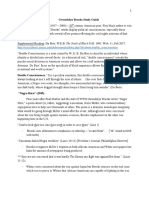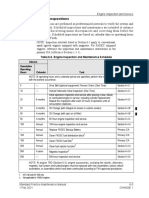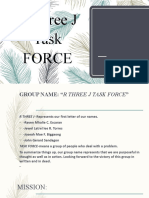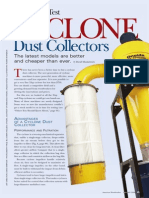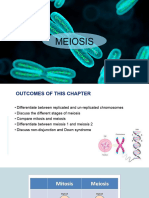DEVELOPING WRITING SKILLS
E. Nilla Pramowardhanny, M.A. wardhanilla@yahoo.com Widyaiswara PPPG Bahasa Jakarta
�OBJECTIVES OF THE WRITING SESSION
1. understand the importance of writing skills for a language development 2. understand the principles of teaching writing 3. identify the types of writing for students 4.teach writing using whole text techniques 5. identify types of written texts (genre) 6. write variety of written texts
�WHY TEACH WRITING SKILLS?
REINFORCEMENT
LANGUAGE
DEVELOPMENT LEARNING STYLE WRITING IS A SKILL
� WRITING
IS AN ACTIVITY THAT SUPPORTS STUDENTS TO ANALYZE AND SYNTHESIZE THEIR DISCRETE KNOWLEDGE OF LANGUAGE ITEMS INTO A TEXT THAT IS ACCEPTABLE IN AN ENGLISH WRITING CONVENTION USING THE APPROPRIATE TEXT STRUCTURE / ORGANIZATION
�PRINCIPLES OF TEACHING WRITING
TO WRITE IS TO COMMUNICATE EXPOSE STUDENTS TO VARIOUS KINDS OF WRITTEN LANGUAGE (text types) GIVE REALISTIC WRITING TASKS PERTAIN TO STUDENTS INTEREST AND NEEDS INTEGRATE WRITING WITH OTHER SKILLS
�KINDS OF WRITING FOR STUDENTS
SIMPLE DESCRIPTION WITH VISUALS PARAGRAPH COMPLETION SENTENCE BUILDING WITH COHESIVE DEVICES SHORT MESSAGES ANNOUNCEMENT DESCRIPTION RECOUNT NARRATIVE PROCEDURE EXPOSITION
�STAGING/GIVING MOVES TO GENRE (rhetorical development)
EACH GENRE HAS ITS FUNCTION / SOCIAL PURPOSE EACH GENRE HAS ITS TEXT/GENERIC STRUCTURE EACH GENRE USES DIFFERENT LANGUAGE FEATURES / LEXICOGRAMMAR POINTS
�Generic Structure of DESCRIPTION
IDENTIFICATION : identifies phenomenon to be described
DESCRIPTION : describes parts, qualities, characteristics
�DESCRIPTION
Is used to describe a particular thing/object, place, or person.
For example: My cat, My bike, My favorite room in the house, The Wildest Amazon River, My favorite actor.
LANGUAGE FEATURES
Use of simple present tense Use of attributive and ephitets (e.g. adjectives)
�generic structure: R E C O U N T
ORIENTATION
: provides the setting (when & where) and introduces participants/character (who) EVENTS : tell what happened, in temporal sequence RE-ORIENTATION (optional) : closure of events (e.g. comments or conclusion)
�RECOUNT
IS USED TO TELL PAST EXPERIENCE (what we or someone did, what took place) TYPES: - Personal recount ( retelling of an
activity that the speaker/writer has been personally involved) e.g. oral anecdote, diary entry, biography - Factual recount (recording the particulars of an incident e.g. police report, news report) - Imaginative recount (taking on an imaginary role and giving details of events) e.g. a day in the life of
�LANGUAGE FEATURES OF RECOUNT
Specific participants (Mr./Mrs , our dog, the thief) Simple past tense Action verbs/material processes (caught, arrived, bought, looked at) Temporal sequence (on Friday, one day, at the beginning, in the end, first, then, next, before, later, finally, etc)
�generic structure: N A R R A T I V E
ORIENTATION : sets the scene (when & where) and introduces participants/character (who) COMPLICATION : a crisis arises, something happened unexpectedly RESOLUTION : the crisis is resolved, for better or for worse RE-ORIENTATION : closing to the narrative (optional)
�NARRATIVE
IS
USED TO ENTERTAIN, that is to gain and TO TEACH and INFORM writers reflections
hold the readers interest in a story
OR
on experience
CAN
BE IMAGINARY or FACTUAL (fairy tales,
mysteries, fables, romances and adventures stories, myths and legends)
�LANGUAGE FEATURES OF NARRATIVE
Specific, often individual participants with defined identities. Major participants are human, or animals with human characteristics. Action verbs/material processes Verbs that refer to what the human participants said, felt, thought (verbal and mental processes) Past tenses Dialog often included and the tenses change according to the circumstances
�generic structure: R E P O R T
GENERAL CLASSIFICATION : tells what the phenomenon under discussion is DESCRIPTION : describes the phenomenon in terms of parts, qualities, habits or behaviors
�REPORT
IS USED TO DOCUMENT, ORGANIZE AND STORE FACTUAL INFORMATION ON A TOPIC IS USED TO CLASSIFY AND DESCRIBE THE PHENOMENA OF OUR WORLD TO TALK ABOUT A WHOLE CLASS OF THINGS, e.g. Bikes, Plants, Animals, Phones Examples: news reports, science reports, weather reports
�LANGUAGE FEATURES OF REPORT
Generalized participants: a whole class of things (volcanoes, newspapers, the royal family) Action verbs/material processes Simple present tense Language for defining, classifying, comparing, contrasting (are called, belong to, can be classified as, are similar to, are more powerful than) May contain technical vocabulary Is written in a formal and objective style
�generic structure: P R O C E D U R E
GOAL
:purpose of doing something MATERIALS : things needed to realize goal STEPS : things to do to realize goal
�PROCEDURE
IS USED TO INFORM AND TO DIRECT SOMEONE ON HOW TO DO or MAKE SOMETHING, or HOW TO ACHIEVE A GOAL A very important genre in a society because it enables people to get things done Is commonly used in the oral and written mode Examples: recipes, games rules, appliance manuals, directions to reach a destination, instructions to do something
�LANGUAGE FEATURES OF PROCEDURE
Generalized participants (things/objects) The reader or the person following the instructions is referred to in a general way (ONE/YOU) or is not mentioned (Pour the boiling water into a bowl) Temporal sequence/adverbial of time (first, at the beginning, then, next, finally) Simple present tense (i.e. imperatives) Action verbs/material processes (go, hold, take, spread)
�Generic Structure of Hortatory Exposition
THESIS : announcement of issue concern ARGUMENTS : reasons for concern, leading to recommendation RECOMMENDATION : statement of what ought or ought not to happen
�Exposition (Hortatory)
To persuade the reader or listener that something should or should not be the case The reader or listener is persuaded to agree with the writers or speakers point of view/thesis Examples: letters to the editor, newspaper editorials, political speeches
�Language Features of Hortatory Exposition
Focus on generic human and non-human participants (issues, ideas, opinions) Use of mental processes to state what writer thinks or feels (e.g. realize, feel, appreciate, think, believe, recognize, know) Use of material processes/action verbs to state what happens Use of relational processes (e.g. to be, to have) Use of simple present tense and modals
�Generic structure of Analytical Exposition
THESIS
introduces topic and indicates writers position. And give outlines of the arguments to be presented.
ARGUMENTS
restates main arguments and elaborate them with supports, evidence, facts, etc.
REITERATION
restates writers position
�Analytical Exposition
To persuade the reader or listener that something is the case To analyze a topic and to persuade the reader that this opinion is correct and supported by arguments Examples: argumentative essay, exploratory essay
�Language Features of Analytical Exposition
Focus on generic human and non-human participants Use of relational processes Use of internal conjunction to state argument (e.g. first, then, finally) Giving reasons through causal conjunction (e.g. so, thus, therefore, hence) Use of present tense
�Generic structure: ANECDOTE
ABSTRACT
signals the retelling of an unusual incident
ORIENTATION
sets the scene (when & where)
CRISIS
provides details of the unusual incident
REACTION
reaction to crisis
CODA (optional)
reflection on or evaluation of the incident
�ANECDOTE
To share with others an account of an unusual or amusing incident Deals with something unexpected or out of the ordinary It is the unexpected events which makes the story worth telling Almost exclusively used for oral genre
�Language Features of Anecdote
Use of material processes/action verbs to tell what happened Use of exclamations (e.g. guess what?! ; I couldnt believe it!) Use of intensifiers (e.g. really?!; very amazing) Use of temporal conjunctions (e.g. and, then)
�generic structure: NEWS ITEM
NEWSWORTHY EVENT(S) recounts of the event in summary form BACKGROUND EVENTS elaborate what happened, to whom, in what situation/circumstances SOURCES comments by participants in, witnesses to and authorities expert on the event
�Language Features of News Item
Short, telegraphic information about story captured in headline Use of material processes/action verbs to retell the story or event Use of projecting verbal processes in Source stage (e.g. the police said; the witness thought ) Focus on circumstances (e.g. last night, just this morning, at that time, etc)
�generic structure: EXPLANATION
A GENERAL STATEMENT to position the reader
A SEQUENCED EXPLANATION OF WHY OR HOW SOMETHING OCCURS/HAPPENS
�EXPLANATION
To explain the processes involved in the formation or workings of natural or socio cultural phenomena To give reasons why things are they are Examples: texts in science or social studies
�Language Features of Explanation
Focus on generic, non-human participants (e.g. clouds, rains, the air, moisture, gas, petrol, oil, urbanization, flood, tornado) Use of simple present tense Use of temporal conjunctions (e.g. before, first, then, in the end, finally) Use of causal conjunctions (e.g. if, when, until, so, as, why)
�REVIEW
To
critique an art work, event for a public audience. Examples: movies, TV shows, books, plays, operas, recordings, exhibitions, concerts and ballets
